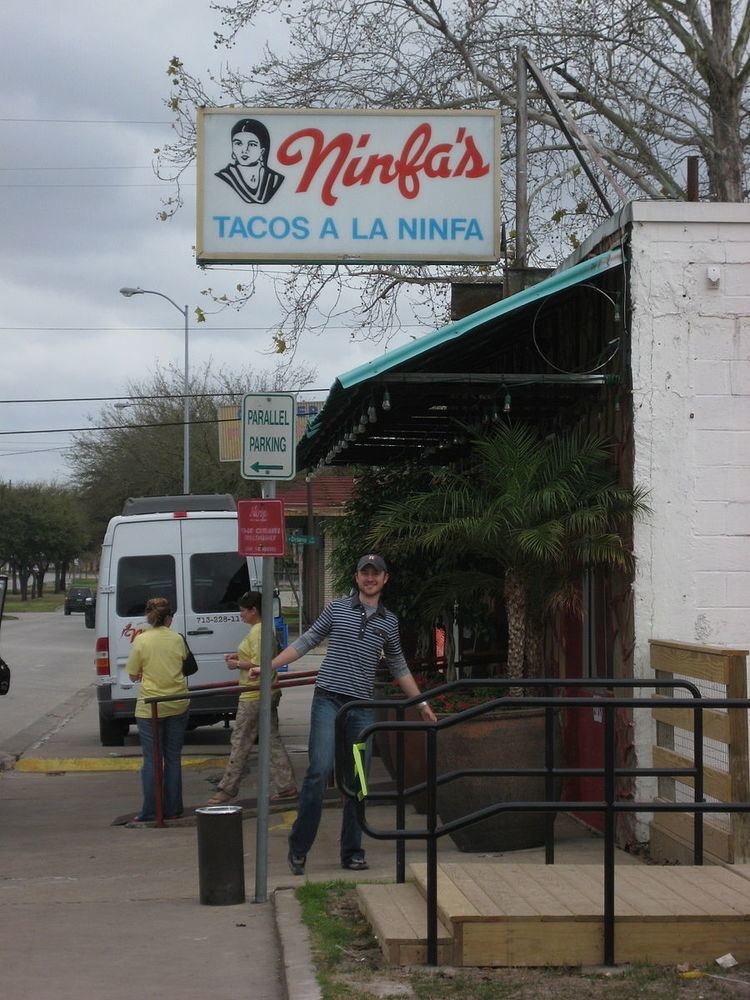 | ||
By 2005 USA Today referred to Houston, Texas as "the dining-out capital of [the United States ]." Houstonians ate out at restaurants more often than residents of other American cities, and Houston restaurants have the second lowest average prices of restaurants of major cities. Tory Gattis, who published op-eds in the Houston Chronicle, said in 2005 that Houston has "a great restaurant scene." Gattis said that one factor contributing to the status is Houston's ethnic diversity, related to Houston's role as a major city of the energy industry, Houston's role as a port city, and Houston's proximity to Latin America and the Cajun areas of Louisiana. Gattis cited Houston's lack of zoning, which makes it easy for a business owner to start a restaurant as land is less expensive and there are fewer regulations and permitting rules. Gattis also cited Houston's freeway network, which, according to Gattis, puts restaurants within a 15-20 minute drive within the residences of most Houstonians during non-rush hour times. Gattis explained that the size of Greater Houston's population allows the city to support niche ethnic restaurants and provides a large customer base for area restaurants. Also he stated that the competition in Houston's restaurant industry forces restaurants of lower quality to go out of business, leaving high quality restaurants open. The journalist explained that Houston's relatively low cost of living reduces labor costs for restaurants and allows its residents more leftover income that could be spent at restaurants. Jobs in Houston have relatively high salaries, Gattis explains that the wages help support Houston's restaurant market.
Contents
- Ethnic enclaves reflecting national cuisines
- Tex Mex cuisine
- Louisiana Creole cuisine
- Vietnamese cuisine and Vietnamese operated restaurants
- Notable Houston restaurants
- References
As of 2010 many food truck vendors are frequently forced to close by city regulations, and Katharine Shilcutt of the Houston Press stated that food truck vendors have difficulties obtaining licenses. A nonprofit organization called "Save Our Food Trucks" started to assist food truck vendors in navigating the municipal bureaucracy.
Ethnic enclaves reflecting national cuisines
Ethnic enclaves in Greater Houston outside the city limits
Tex-Mex cuisine
Tex-Mex cuisine is very popular in Houston. Many Mexican cuisine restaurants in Houston have aspects that originate from Texas culture. In his book Ethnicity in the Sunbelt: A History of Mexican Americans in Houston, Arnoldo De León said that the recent immigrants from Mexico to Houston add foods that are popular with immigrants to menus of Mexican restaurants in Houston. Robb Walsh of the Houston Press said "You might say that the immigrant flow is what keeps the "Mex" in Tex-Mex." In Houston, as in other places in Texas, the existing Chicano community influences the cooking methods used by recent immigrants.
Louisiana Creole cuisine
The Louisiana Creole people who settled Houston around the 1920s brought their cuisine with them and often sold the food. The cuisine style spread in Houston in the post-World War II era. Because of the post-World War II increase, various chains in the Houston area sell Creole food, including Frenchy's Chicken, Pappadeaux, and Popeyes. Creole food items include boudin, black rice and shrimp creole, crawfish, gumbo, and jambalaya. Bernadette Pruitt, author of The Other Great Migration: The Movement of Rural African Americans to Houston, 1900-1941, wrote that Creole cooking became "an important cultural bridge" in the city and in its African-American community, and that "As cooks, Creole housewives transformed Houston's typical southern cuisine."
Vietnamese cuisine and Vietnamese-operated restaurants
The presence of Vietnamese immigrants lead to the development of Vietnamese restaurants throughout Houston. Some establishments from Vietnamese restaurateurs offer Vietnamese-style crawfish, a mixture of Louisiana cuisine and Vietnamese cuisine.
Houston has many "you buy, we fry" seafood restaurants. Most of the "you buy, we fry" restaurants in Houston are operated by Vietnamese immigrants and Vietnamese Americans. Carl Bankston, an associate professor of Asian studies and sociology at Tulane University, said in 2004 that ethnic Vietnamese are disproportionately employed in fishing, seafood processing, and shrimping in the Gulf Coast area. Around 1974 Vietnamese immigrants began coming to the Gulf Coast to work in the shrimping industry, therefore many ethnic Vietnamese worked for related industries in Texas. African Americans tend to be the main clientele of Houston's "you buy, we fry" fish restaurants. As of 2004 the Third Ward, an African American neighborhood, has the city's highest concentration of "you buy, we fry" restaurants.
